第111章
This made the third species of marsupial rat I had so far obtained-- but the number of these animals is very considerable in Brazil, where they take the place of the shrews of Europe;shrew mice and, indeed, the whole of the insectivorous order of mammals, being entirely absent from Tropical America.One kind of these rat-like opossums is aquatic, and has webbed feet.The terrestrial species are nocturnal in their habits, sleeping during the day in hollow trees, and coming forth at night to prey on birds in their roosting places.It is very difficult to rear poultry in this country on account of these small opossums, scarcely a night passing, in some parts, in which the fowls are not attacked by them.
August 5th.--The river reminds me of some parts of the Jaburu channel, being hemmed in by two walls of forest rising to the height of at least a hundred feet, and the outlines of the trees being concealed throughout by a dense curtain of leafy creepers.
The impression of vegetable profusion and overwhelming luxuriance increases at every step.The deep and narrow valley of the Cupari has a moister climate than the banks of the Tapajos.We have now frequent showers, whereas we left everything parched up by the sun at Aveyros.
After leaving the last sitio we advanced about eight miles, and then stopped at the house of Senor Antonio Malagueita, a mameluco settler, whom we had been recommended to visit.His house and outbuildings were extensive, the grounds well weeded, and the whole wore an air of comfort and well-being which is very uncommon in this country.A bank of indurated white clay sloped gently up from the tree-shaded port to the house, and beds of kitchen herbs extended on each side, with (rare sight!) rose and jasmine trees in full bloom.Senor Antonio, a rather tall middle-aged man, with a countenance beaming with good nature, came down to the port as soon as we anchored.I was quite a stranger to him, but he had heard of my coming, and seemed to have made preparations.I never met with a heartier welcome.On entering the house, the wife, who had more of the Indian tint and features than her husband, was equally warm and frank in her greeting.
Senor Antonio had spent his younger days at Para, and had acquired a profound respect for Englishmen.I stayed here two days.My host accompanied me in my excursions; in fact, his attentions, with those of his wife, and the host of relatives of all degrees who constituted his household, were quite troublesome, as they left me not a moment's privacy from morning till night.
We had, together, several long and successful rambles along a narrow pathway which extended several miles into the forest.Ihere met with a new insect pest, one which the natives may be thankful is not spread more widely over the country: it was a large brown fly of the Tabanidae family (genus Pangonia), with a proboscis half an inch long and sharper than the finest needle.
It settled on our backs by twos and threes at a time, and pricked us through our thick cotton shirts, making us start and cry out with the sudden pain.I secured a dozen or two as specimens.As an instance of the extremely confined ranges of certain species, it may be mentioned that I did not find this insect in any other part of the country except along half a mile or so of this gloomy forest road.
We were amused at the excessive and almost absurd tameness of a fine Mutum or Curassow turkey, that ran about the house.It was a large glossy-black species (the Mitu tuberosa), having an orange-coloured beak, surmounted by a bean-shaped excrescence of the same hue.It seemed to consider itself as one of the family:
attending all the meals, passing from one person to another round the mat to be fed, and rubbing the sides of its head in a coaxing way against their cheeks or shoulders.At night it went to roost on a chest in a sleeping-room beside the hammock of one of the little girls to whom it seemed particularly attached (regularlyfollowing her wherever she went about the grounds).Ifound this kind of Curassow bird was very common in the forest of the Cupari; but it is rare on the Upper Amazons, where an allied species, which has a round instead of a bean-shaped waxen excrescence on the beak (Crax globicera), is the prevailing kind.
These birds in their natural state never descend from the tops of the loftiest trees, where they live in small flocks and build their nests.The Mitu tuberosa lays two rough-shelled, white eggs; it is fully as large a bird as the common turkey, but the flesh when cooked is drier and not so well flavoured.It is difficult to find the reason why these superb birds have not been reduced to domestication by the Indians, seeing that they so readily become tame.The obstacle offered by their not breeding in confinement, which is probably owing to their arboreal habits, might perhaps be overcome by repeated experiment; but for this the Indians probably had not sufficient patience or intelligence.
The reason cannot lie in their insensibility to the value of such birds, for the common turkey, which has been introduced into the country, is much prized by them.
We had an unwelcome visitor while at anchor in the port of Antonio Malagueita.I was awakened a little after midnight, as Ilay in my little cabin, by a heavy blow struck at the sides of the canoe close to my head, which was succeeded by the sound of a weighty body plunging into the water.I got up; but all was again quiet, except the cackle of fowls in our hen-coop, which hung over the side of the vessel about three feet from the cabin door.